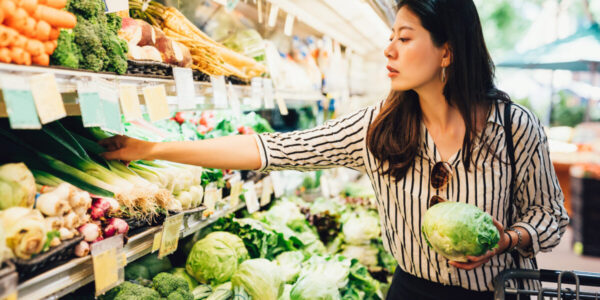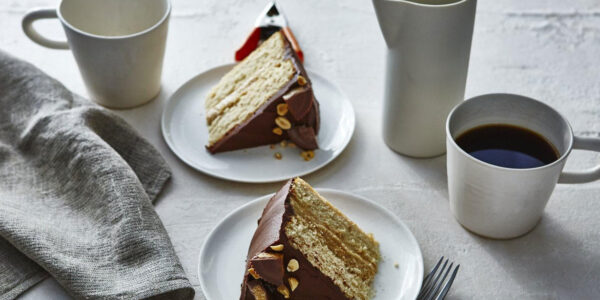
Tickled Pink
If you and I were having dinner right now in some small cafe in Provence, you know what we’d probably be drinking? A chilled, crisp rosé. For the French―as well as the Spanish, the Portuguese, and the Italians―summer is the season for snappy, fruity wines. And this usually means dry rosés, not white wines, because rosés possess the best of two worlds: They are refreshing like whites, but have a deeper character close to reds. In fact, dry rosé is a bonus summertime drink for red and white wine drinkers: It gives the former something a little more thirst-quenching, the latter a little more fruit.
Both traits are virtues when you add dinner to the equation. Rosés have enough of both acidity and bold fruitiness to be extremely flexible with food. One reason they’re so ubiquitous around the Mediterranean this time of year is that they’re a perfect match for salads as well as grilled foods liberally seasoned with olive oil, garlic, herbs, and spices.
Alas, despite all this (and seemingly countless Peter Mayle novels), we Americans are only on the brink of drinking pink. But I sense a greater spirit of vinous experimentation afoot. Recently I walked into the prestigious wine department of Dean & DeLuca gourmet market in the Napa Valley, and there within easy reach was a long row of pink wines, just waiting to be taken home with a round of creamy, ripe French cheese to begin a summer’s evening.
It may come as a surprise to learn that those rosés aren’t easy to make. Well, good ones aren’t, anyway―there are some that taste dank and watery, as though the winemaker decided to turn a batch of lackluster leftover grapes into a cheap sip that looked a lot prettier than it tasted. Great rosés, on the other hand, require all the care, patience, skill, and good grapes that any other great wine takes.
There are actually several ways to make high-quality rosés, all of which revolve around a central theme: The winemaker crushes red grapes, but instead of letting the juice ferment on the skins, separates it off after it’s lightly tinted pink. (Remember, making a custard sounds easy, too, but every good cook knows better.)
At first glance, it might seem as if white Zinfandels and rosés are the same thing. They are not. The process of making the two is essentially the same, but they don’t taste alike. Count on white Zins to be sweeter, softer, and less concentrated. While dry rosés have a centuries-long history in the Old World, white Zinfandel was invented in 1972 by the large California winery Sutter Home, which had the brainstorm of making a soft, light, slightly sweet pinkish white wine using red Zinfandel grapes. Today white Zinfandel is very popular, but considered something of a “beginners’ wine” by connoisseurs.
Not so dry rosés. There are numerous still rosés, but don’t forget about sparkling ones. They’re sensational in summer: You get all the personality of a rosé plus the thirst-quenching action of bubbles. Some rosé sparklers are labeled as such, but there are also sparklers called blanc de noirs. These are made with all red grapes (Pinot Noir), but they aren’t as deeply pink-colored as other rosés; in fact, a blanc de noirs usually has just the faintest touch of color.
So, this weekend, fire up the grill, put on some French (or Italian) music, sit out on the deck, and open a chilled rosé. Sure, it’s not the same as being on the Riviera, but it’s pretty wonderful all the same.
THINKING PINK
Ca’ del Solo Freisa (Frizzante) 1999 (Monterey County), $16. This fizzy―but not quite sparkling―wine made from the Italian grape Freisa is crisp and sassy. Low in alcohol (5.8 percent―standard wines are around 13 percent), it’s great as an aperitif. Or just hop in the hammock with a good novel and a bottle of this.
Mumm Cuvée Napa Blanc de Noirs nonvintage (Napa Valley), $18. The palest pink, this sparkler has a rush of citrus and strawberries, in perfect balance.
Domaine Tempier Bandol Rosé 1999 (Provence, France), $23. Boldly fruity, this rosé, based on Mourvèdre and Grenache grapes, has aromas and flavors right out of a Vincent van Gogh painting: warm earth, haystacks, citrus trees, and dried wild herbs.
McDowell Grenache Rosé Reserve 1999 (Mendocino), $9. Fresh and spicy, with subtle strawberry and watermelon notes.
Trefethen SIN (Summer In Napa) 1999 (Napa Valley), $12. Terrific―bold and sassy, with just a touch of raspberry and vanilla. The back label says it all: “Kick off your shoes.”
Zaca Mesa Z Gris 2000 (Santa Barbara County), $9. A basketful of fruit (strawberries figure prominently) and a hint of sweetness conjure up images of carnivals; a long, spicy finish makes you take this Rhöne blend more seriously.
SUNSET’S STEALS OF THE MONTH
La Vieille Ferme Rosé 1999 (Côtes du Ventoux, France), $8. La Vieille Ferme (“the old farm”) makes a typical south-of-France-cafe dry rosé. A blend of Grenache and Cinsault, it’s light and fresh, with a hint of spice.
Sutter Home White Zinfandel 1999 (California), $5. Not a rosé, admittedly, but this white Zin (the original) is worth knowing.
